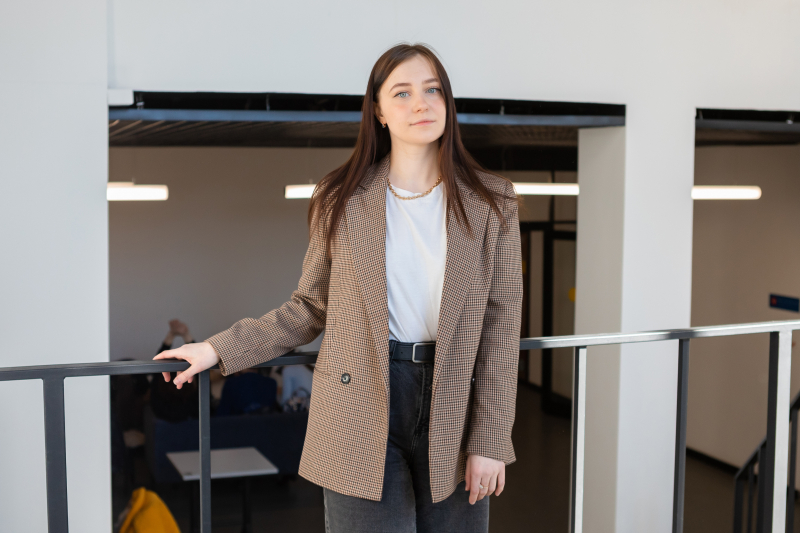Anna, why did you decide to develop a course?
I saw this as an excellent opportunity not only to try my hand at teaching but also to learn how to create training materials and apply various teaching methods and evaluation systems. Before the competition, I mentored courses in molecular food technology and nutrition physiology, though I mainly prepared presentations and tests for these courses. I had never developed one myself but I was eager to try. I also consider doing my PhD in the future, so right now, I want to fully immerse myself in teaching and see if it’s the right fit for me.
Did your major affect your course’s content?
Healthy eating is undoubtedly popular now since more and more people are starting to understand that they can’t enjoy a good quality of life without a healthy lifestyle. My course promotes healthy living, makes students reflect on their food habits, and helps them acquire new ones.
How did you create your course?
From the outset I decided on what I want to achieve with this course, namely, what my students would learn after finishing the course. Then, my curator and I planned its structure and chose teaching methods and evaluation systems.
When working on the course, we had to keep in mind that we could only have six practical classes within the entire course. We also had to draw up a list of topics that would give fundamental information about healthy eating. For instance, we spoke about whether people who don’t have diabetes should avoid high glycemic foods and why sports coaches often advise against consuming dairy products. I was determined to address these popular misconceptions and once and for all explain why they are scientifically wrong. I also devoted part of my classes to such topics as calories and a balanced diet.
To put their knowledge and skills into practice, students analyzed their food habits, identified their food preferences, and worked on cases where they had to make diets healthier. One of the tasks was to calculate calories, build a meal plan for a day, and give recommendations for a young woman who works out twice a week based on her height, weight, and age.
The course taught students to create a healthy diet that not only contains enough calories but is also rich in vitamins and minerals. Later on, they will have no trouble breaking their bad habits and picking up new ones because they know that having a healthy diet isn’t as difficult as it seems.

Credit: photogenica.ru
What were the hardest and easiest things about developing the course?
The main challenge was to design the curriculum. It’s a rather extensive task since I had to rigorously describe my course and meet the deadline. That was something I had never done before but, luckily. I had my curator who helped me cope with many challenges along the way.
What’s more, it was quite stressful to step out of my comfort zone. Although I had my mentoring experience, I was a bit nervous anyway when I had my first class. Yet my students’ support and feedback really helped me: they were happy with the course and said lots of sweet words to me.
What I enjoyed most was coming up with different activities for students. When I only started planning the course, I already knew, more or less, which methods I can use to engage my students. I added more group tasks: students solved various cases in pairs, asked each other about their food preferences and habits, and discussed them in groups. In one of the classes, we held a debate about dietary restrictions. Students prepared their talking points in advance and presented their views on the topic. Moreover, I created a special digital platform with tasks for self-examination, a questionnaire, and a practical dietary project. As a final task, students had to create a customized nutrition plan.

Anna Pozhar. Photo by Dmitry Grigoryev / ITMO.NEWS
What would you recommend to other students who want to develop their own courses?
If you want to create your own course, you should always start from the end. The first thing you should do is to figure out what competencies you want your students to acquire. Then, you should gradually fill out your course while making sure that theory goes hand in hand with practical tasks. And don't ever neglect the quality of your presentations: the better the presentation, the easier it is for students to remember information from it.





